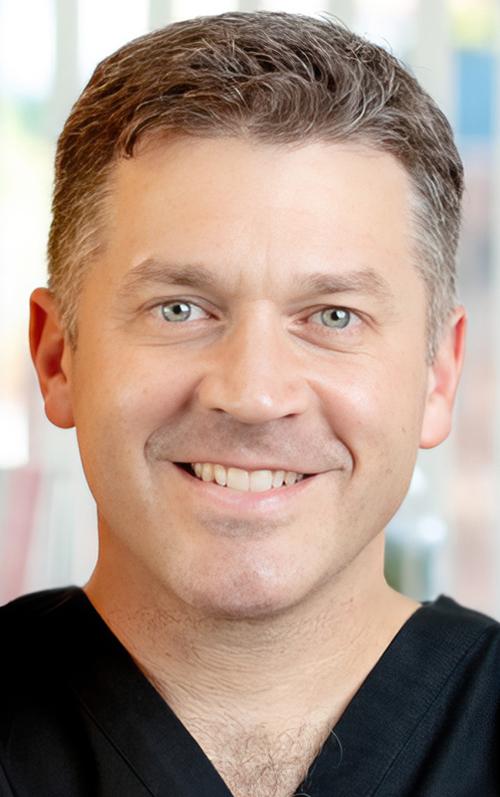Cellular healthcare is an approach that goes beyond clinical laboratory testing to identify the location of specific cancer cells and aid in treatment decisions
Advances in synthetic biology and genetic engineering are leading to development of bacterial biosensors that could eventually aid pathologists and clinical laboratories in diagnosis of many types of cancers.
One recent example comes from researchers at the University of California San Diego (UCSD) who worked with colleagues in Australia to engineer bacteria that work as “capture agents” and bind to tumorous material.
The resulting “bacterial biosensors” go on a “sort of molecular manhunt” to find and capture tumor DNA with mutations in the Kirsten Rat Sarcoma virus (KRAS) gene, according to an article published by the National Cancer Institute (NCI) titled, “Could Bacteria Help Find Cancer?”
The KRAS gene is associated with colorectal cancer. The researchers named their development the Cellular Assay for Targeted CRISPR-discriminated Horizontal gene transfer (CATCH).
CATCH successfully detected cancer in the colons of mice. The researchers believe it could be used to diagnose cancers, as well as infections and other diseases, in humans as well, according to a UCSD news release.
The researchers published their proof-of-concept findings in the journal Science titled, “Engineered Bacteria Detect Tumor DNA.”

“If bacteria can take up DNA, and cancer is defined genetically by a change in its DNA, then, theoretically, bacteria could be engineered to detect cancer,” gastroenterologist Daniel Worthley, PhD, a cancer researcher at Colonoscopy Clinic in Brisbane, Australia, told MedicalResearch.com. This research could eventually provide clinical laboratories and anatomic pathologists with new tools to use in diagnosing certain types of cancer. (Photo copyright: Colonoscopy Clinic.)
Tapping Bacteria’s Natural Competence
In their Science paper, the researchers acknowledged other synthetic biology achievements in cellular biosensors aimed at human disease. But they noted that more can be done by leveraging the “natural competence” skill of bacteria.
“Biosensors have not yet been engineered to detect specific extracellular DNA sequences and mutations. Here, we engineered naturally competent Acinetobacter baylyi (A. baylyi) to detect donor DNA from the genomes of colorectal cancer cells, organoids, and tumors,” they wrote.
“Many bacteria can take up DNA from their environment, a skill known as natural competence,” said Rob Cooper, PhD, co-first author of the study and a scientist at US San Diego’s Synthetic Biology Institute, in the news release. A. baylyi is a type of bacteria renowned for success in doing just that, the NCI article pointed out.
CRISPR Aids CATCH Development
Inside Precision Medicine shared these steps toward creation of the CATCH technique:
- Researchers engineered bacteria using CRISPR.
- This enabled them to explore “free-floating DNA sequences on a genomic level.”
- Those sequences were compared to “known cancer DNA sequences.”
- A. baylyi (genetically modified) was tested on its ability to detect “mutated and healthy KRAS DNA.”
- Only bacteria that had “taken up mutated copies of KRAS … would survive treatment with a specific drug.”
“It was incredible when I saw the bacteria that had taken up the tumor DNA under the microscope. The mice with tumors grew green bacterial colonies that had acquired the ability to be grown on antibiotic plates,” said Josephine Wright, PhD, Senior Research Fellow, Gut Cancer Group, South Australian Health and Medical Research Institute (SAHMRI), in the news release.
Detecting DNA from Cancer Cells In Vitro and in Mice
Findings in vitro and in mice include the following:
- The engineered bacteria enabled detection of DNA with KRAS G12D from colorectal cancer cells made in the lab, NCI reported.
- When mice were injected with colorectal cancer cells, the researchers’ technology found tumor DNA, Engadget reported.
The study adds to existing knowledge of horizontal gene transfer from bacteria to bacteria, according to UCSD.
“We observed horizontal gene transfer from the tumor to the sensor bacteria in our mouse model of colorectal cancer. This cellular assay for targeted, CRISPR-discriminated horizontal gene transfer (CATCH) enables the biodetection of specific cell-free DNA,” the authors wrote in Science.
“Colorectal cancer seemed a logical proof of concept as the colorectal lumen is full of microbes and, in the setting of cancer, full of tumor DNA,” gastroenterologist Daniel Worthley, PhD, a cancer researcher at Colonoscopy Clinic in Brisbane, Australia, told MedicalResearch.com.
Finding More Cancers and Treatment
More research is needed before CATCH is used in clinical settings. The scientists are reportedly planning on adapting CATCH to multiple bacteria that can locate other cancers and infections.
“The most exciting aspect of cellular healthcare … is not in the mere detection of disease. A laboratory can do that,” wrote Worthley in The Conversation. “But what a laboratory cannot do is pair the detection of disease (a diagnosis) with the cells actually responding to the disease [and] with appropriate treatment.
“This means biosensors can be programmed so that a disease signal—in this case, a specific sequence of cell-free DNA—could trigger a specific biological therapy, directly at the spot where the disease is detected in real time,” he added.
Clinical laboratory scientists, pathologists, and microbiologists may want to stay abreast of how the team adapts CATCH, and how bacterial biosensors in general continue to develop to aid diagnosis of diseases and improve ways to target treatment.
—Donna Marie Pocius
Related Information:
Could Bacteria Help Find Cancer?
Researchers Engineer Bacteria That Can Detect Tumor DNA
Engineered Bacteria Can Act as Biosensors to Detect Cancer DNA
Engineered Bacteria Detect Tumor DNA
Engineered Bacteria Can Detect Tumor DNA
Scientists Genetically Engineer Bacteria to Detect Cancer Cells
Genetically Engineered Bacteria Can Detect Cancer Cells in a World-First Experiment


